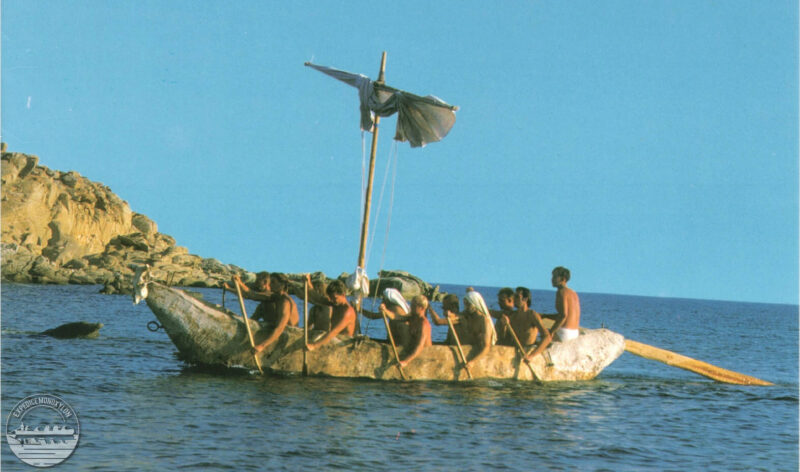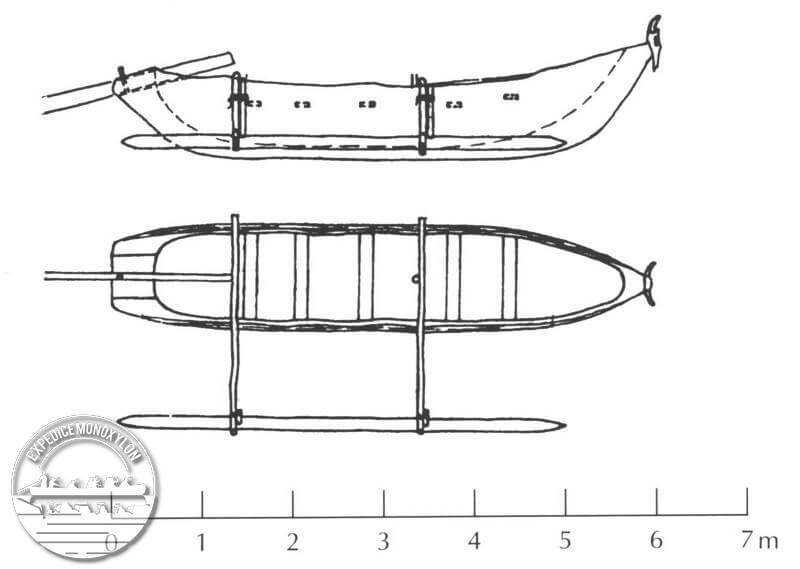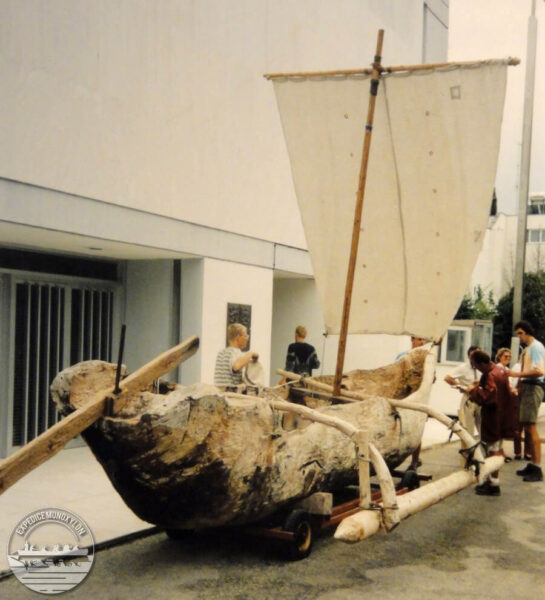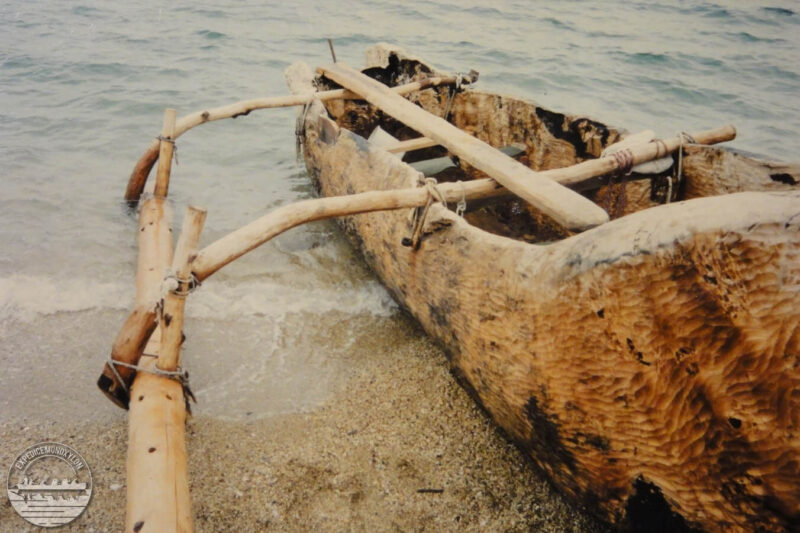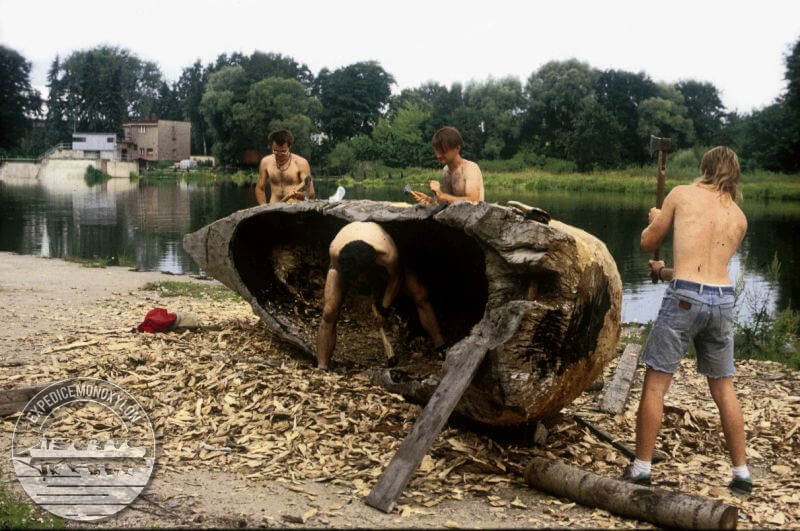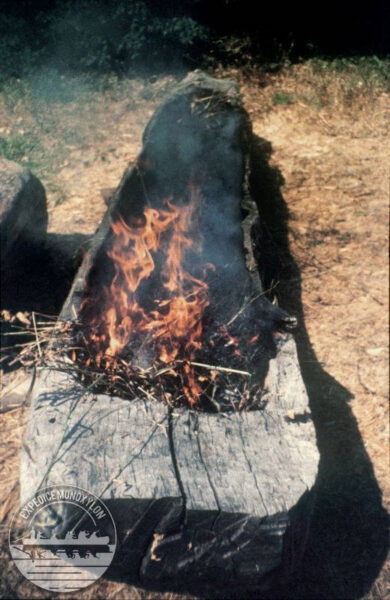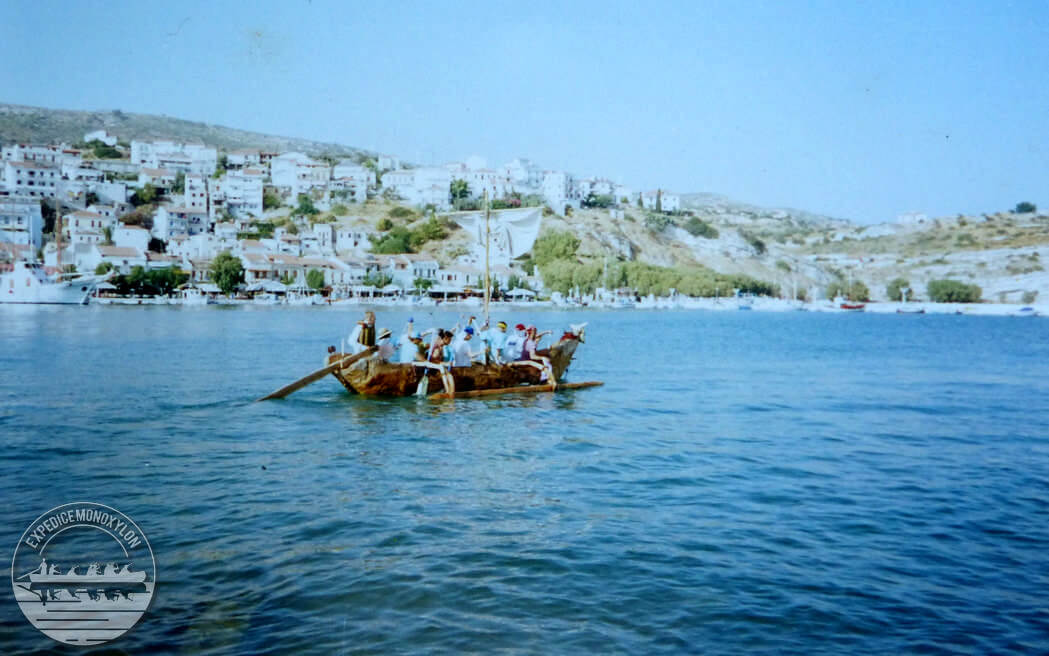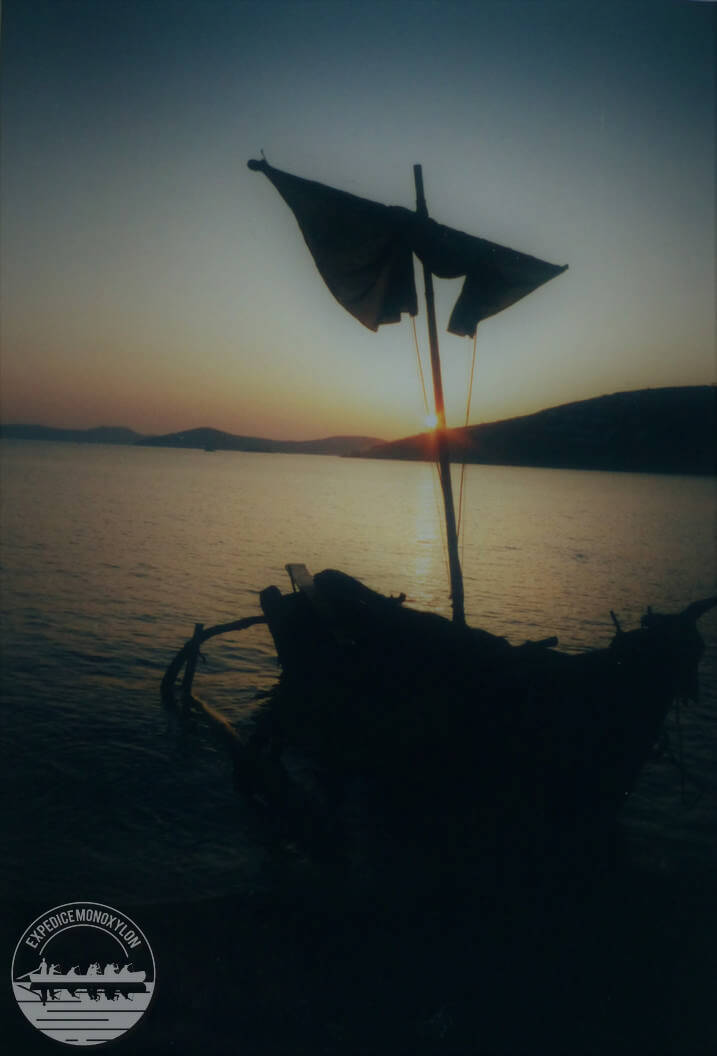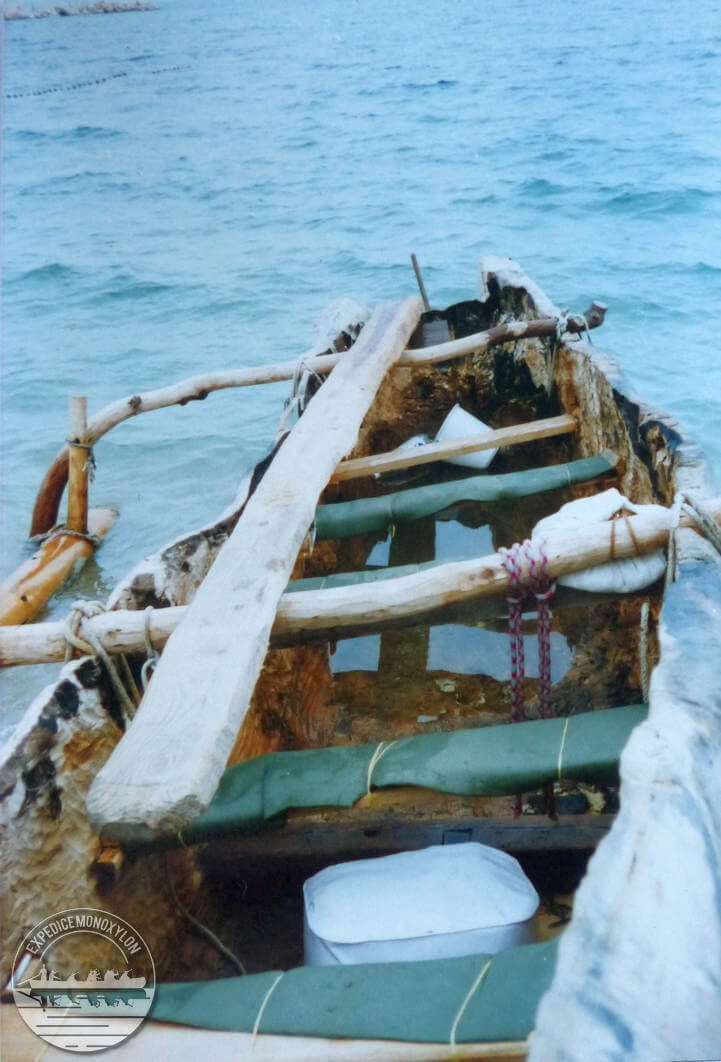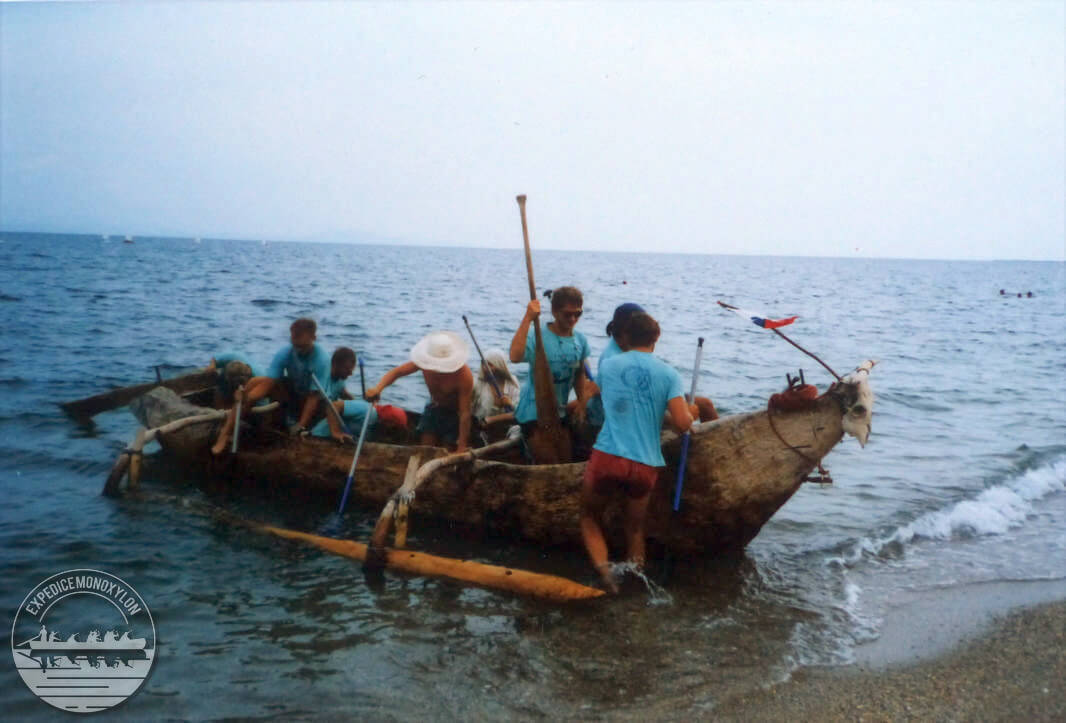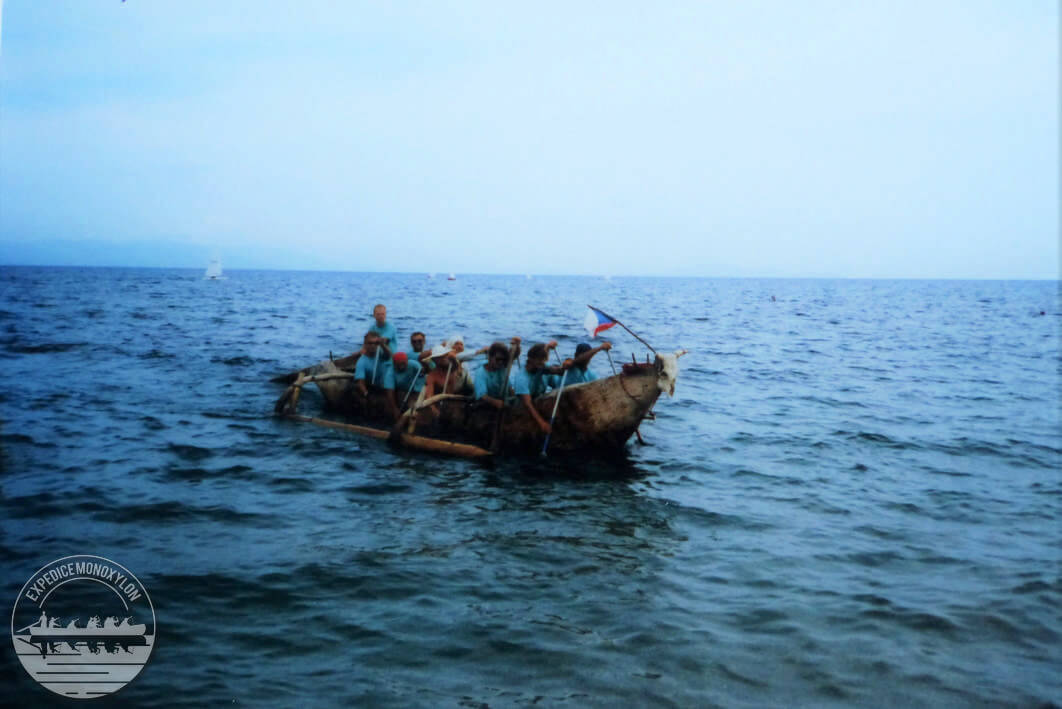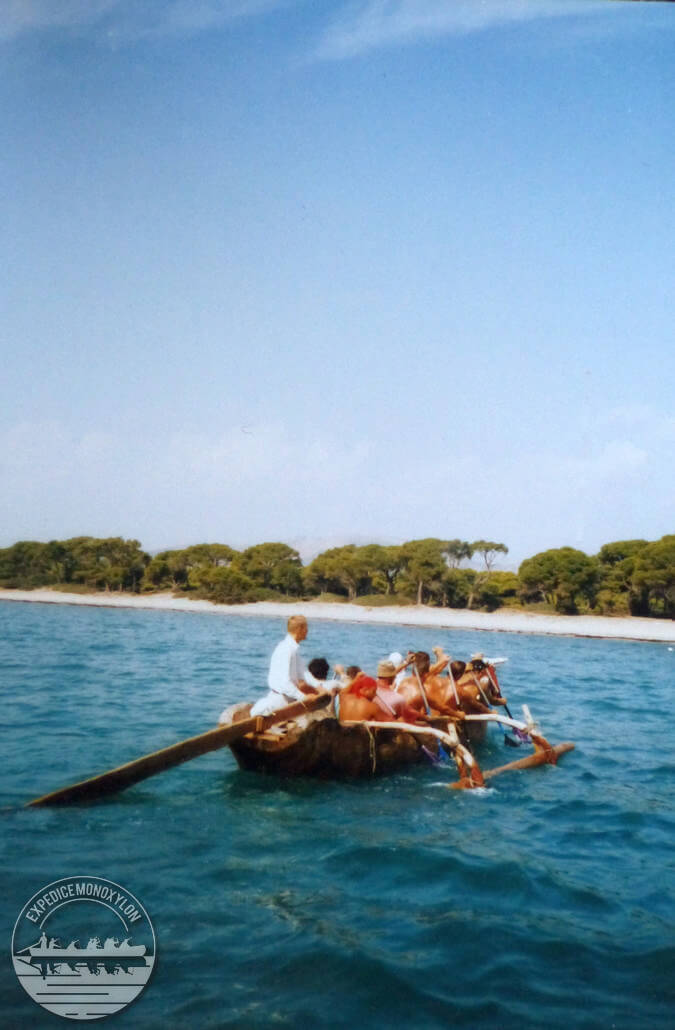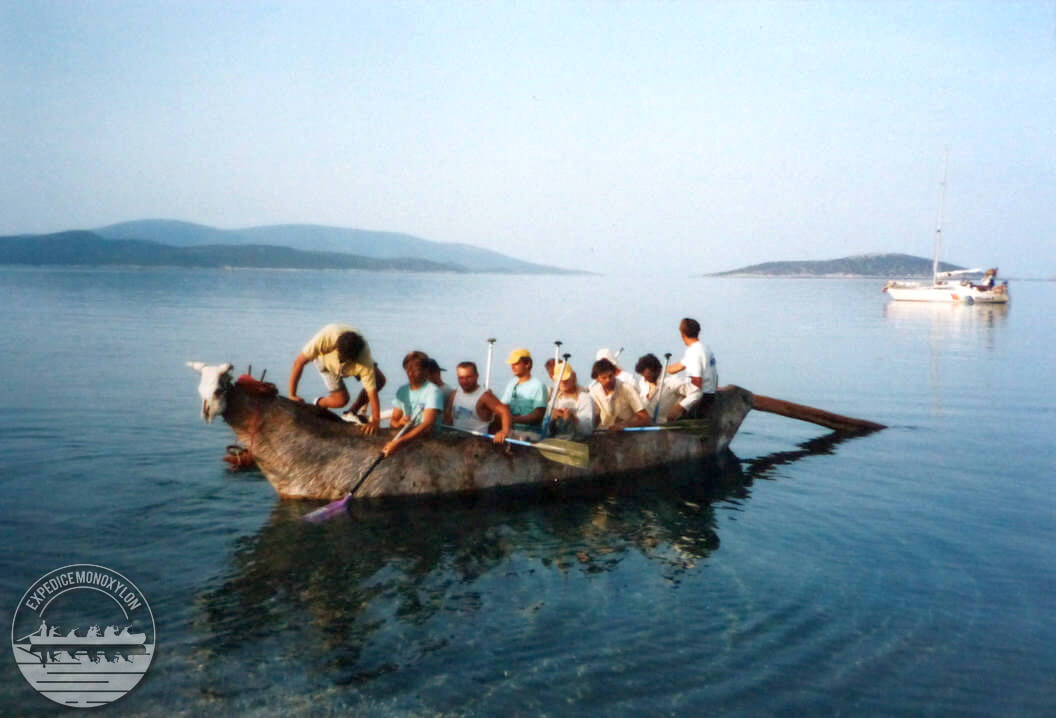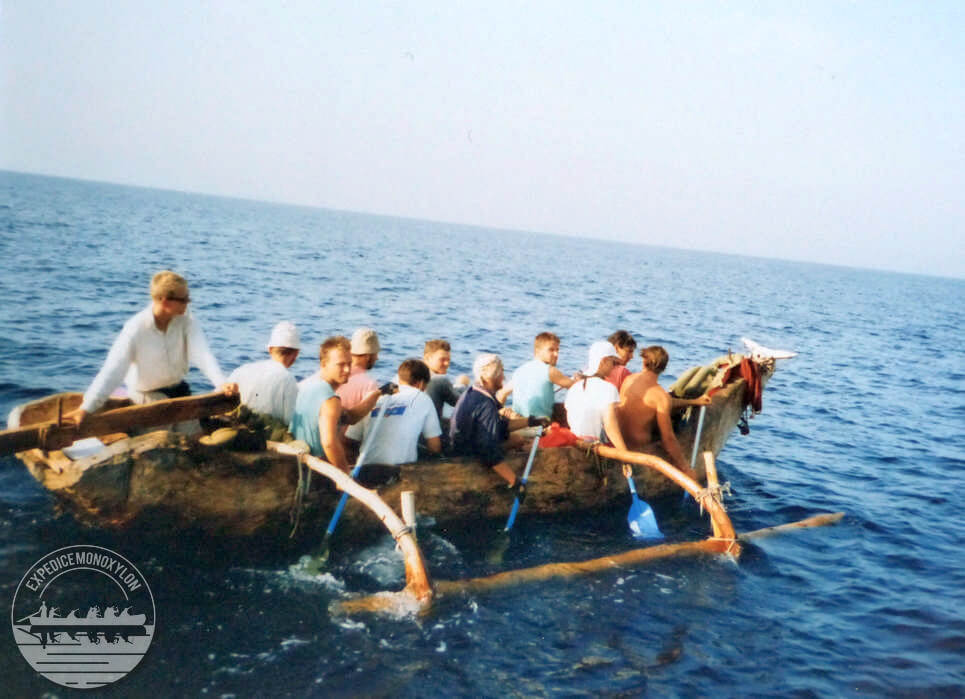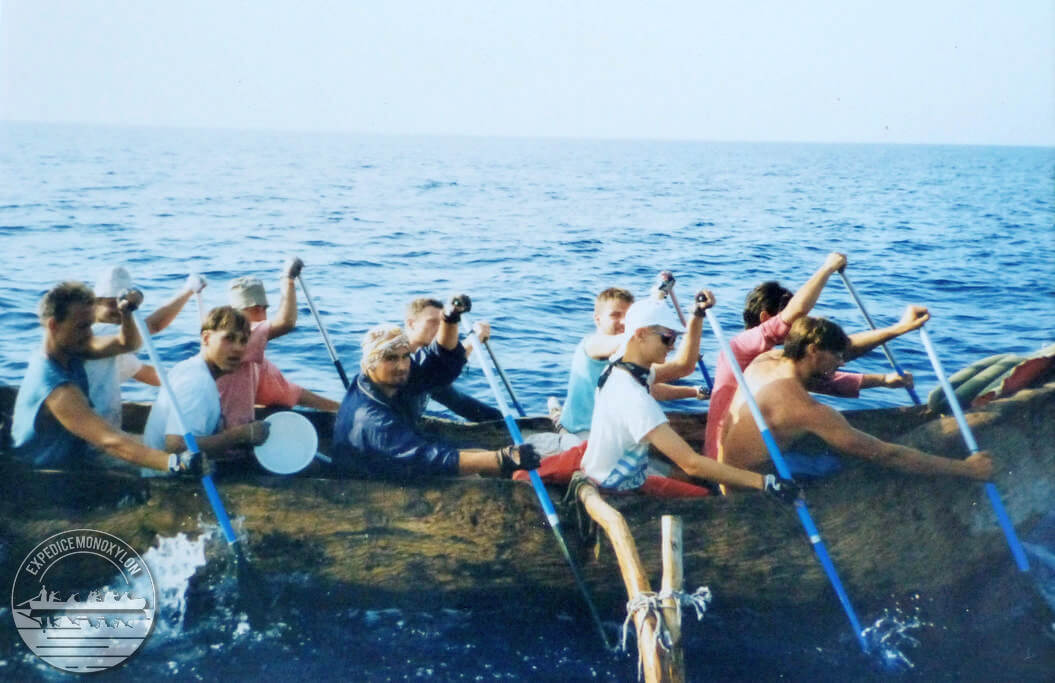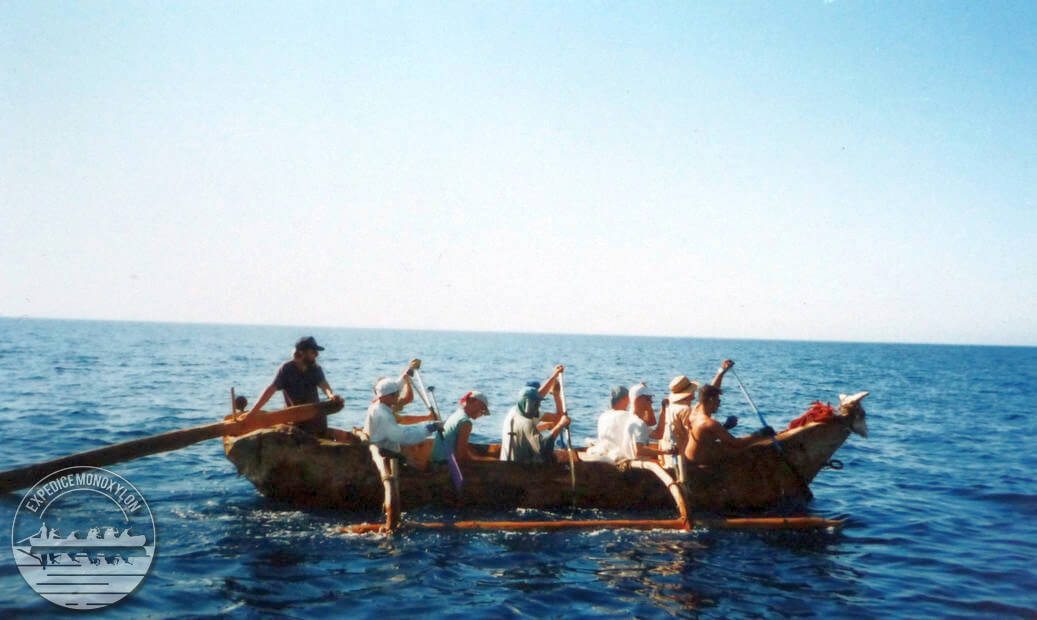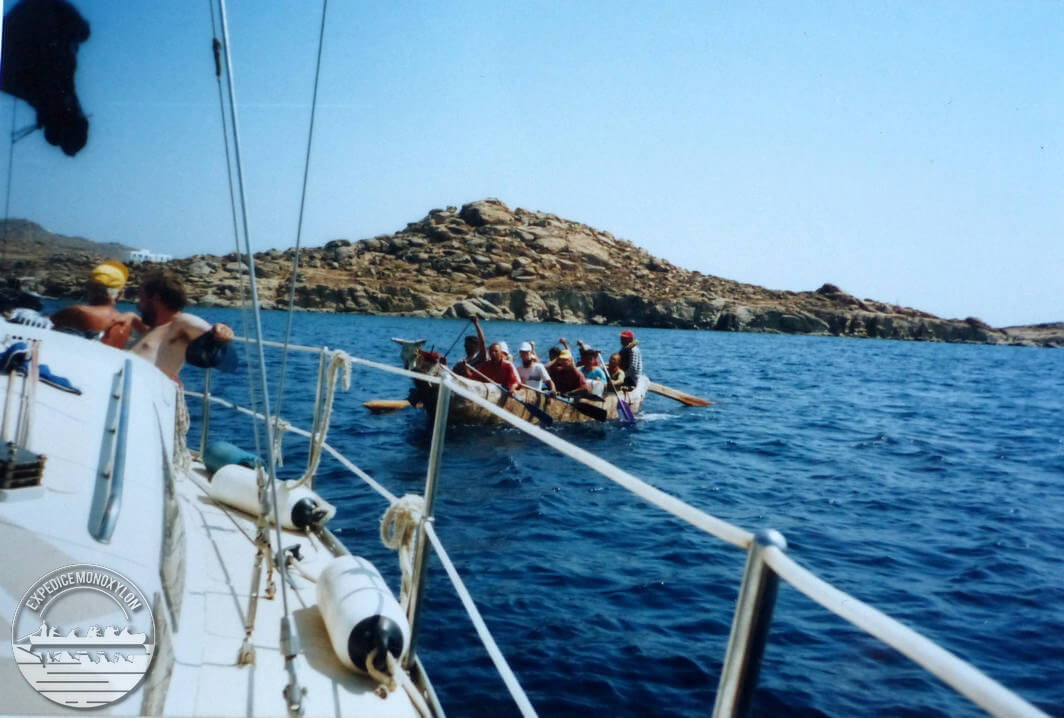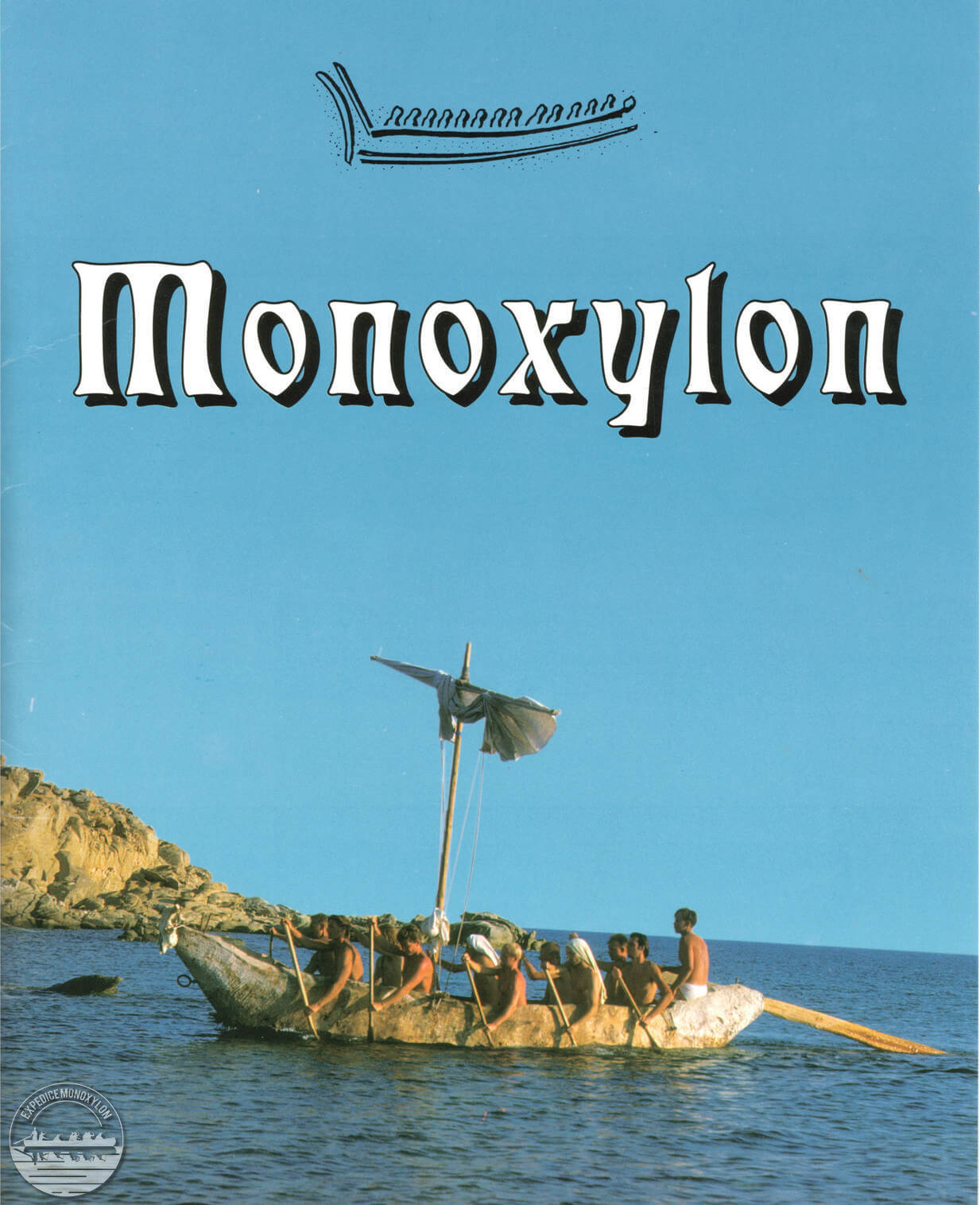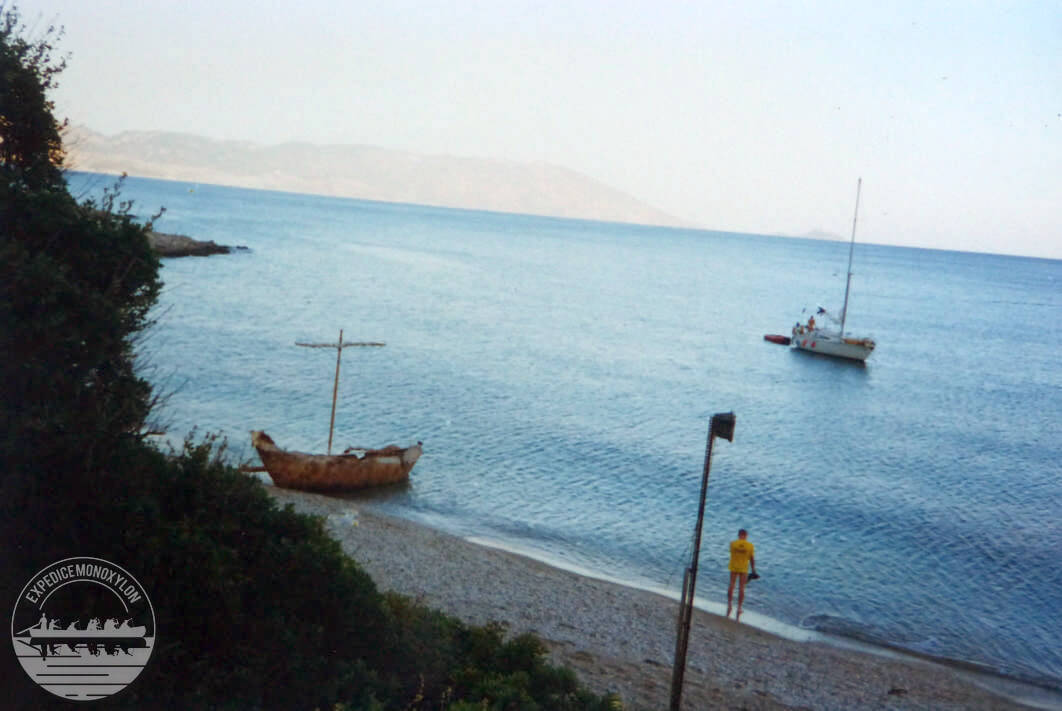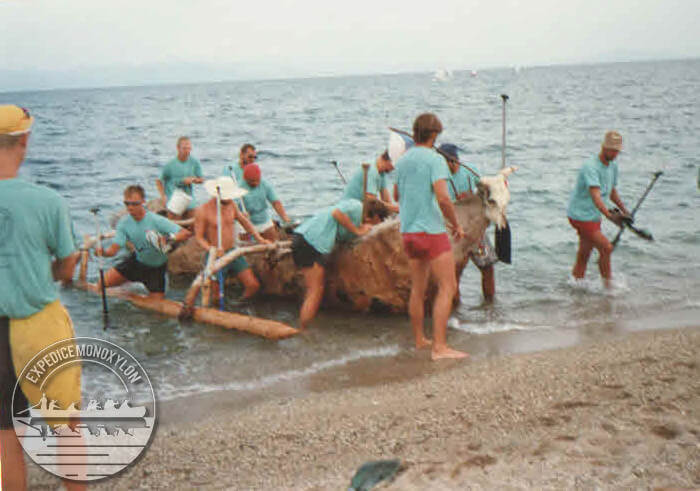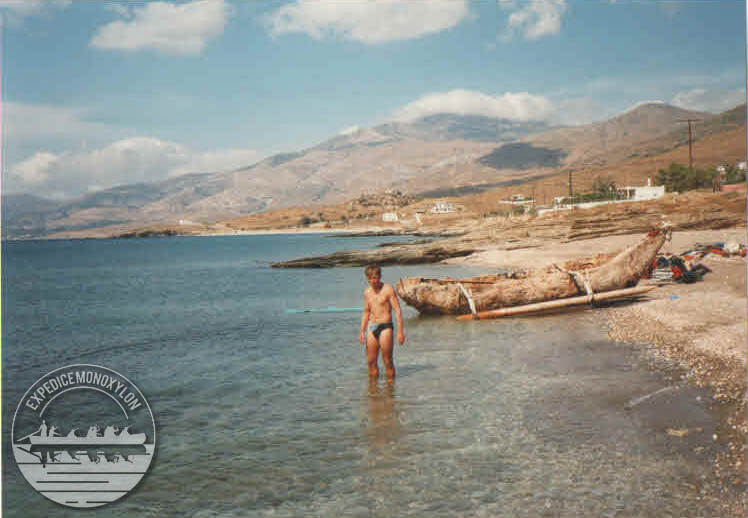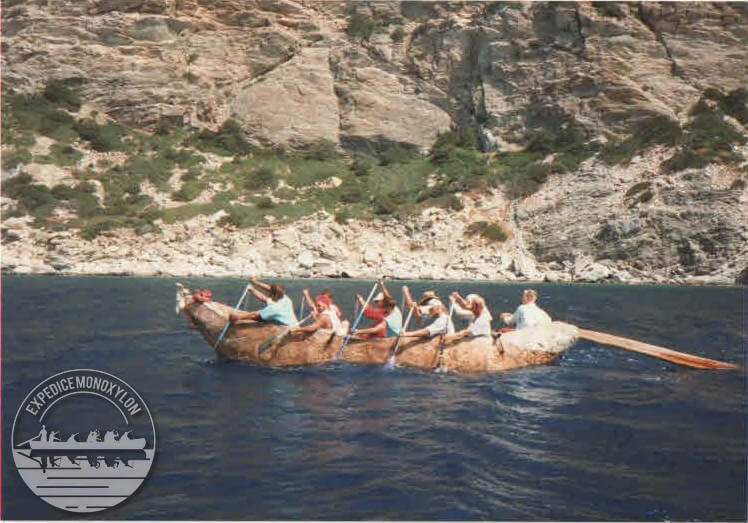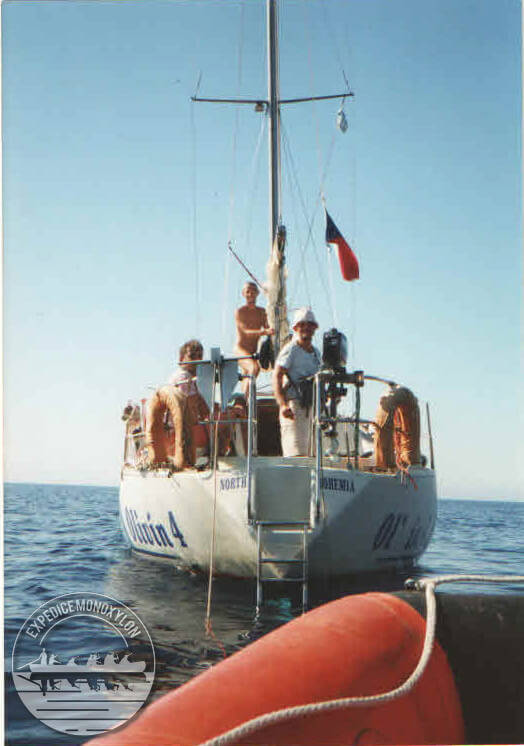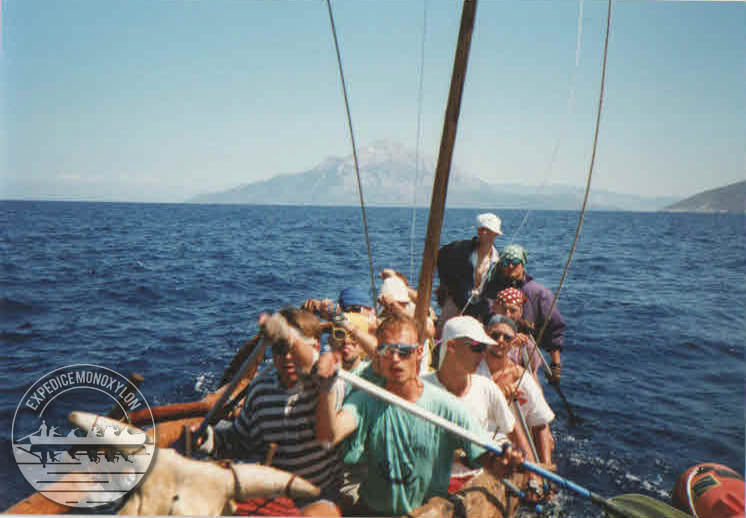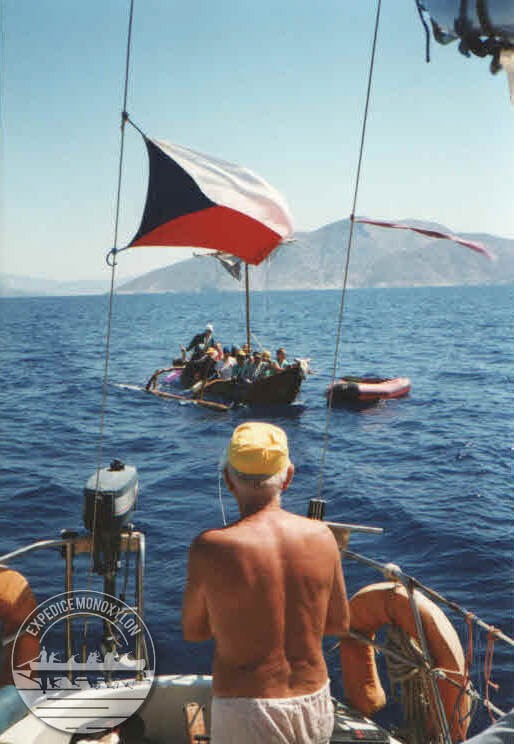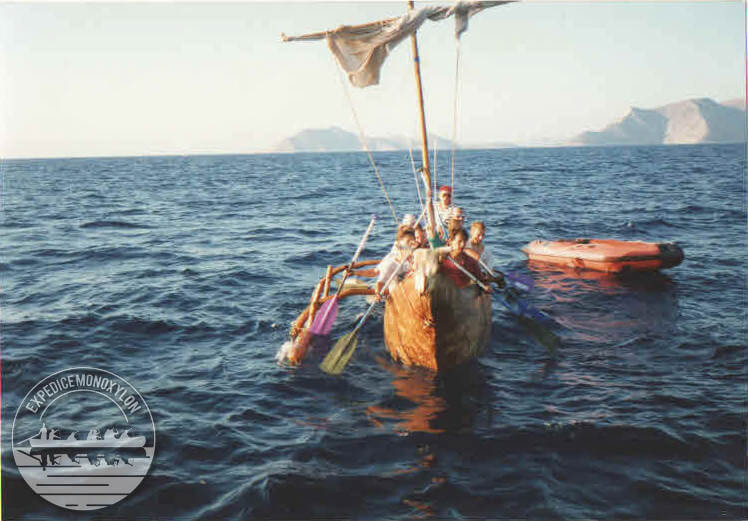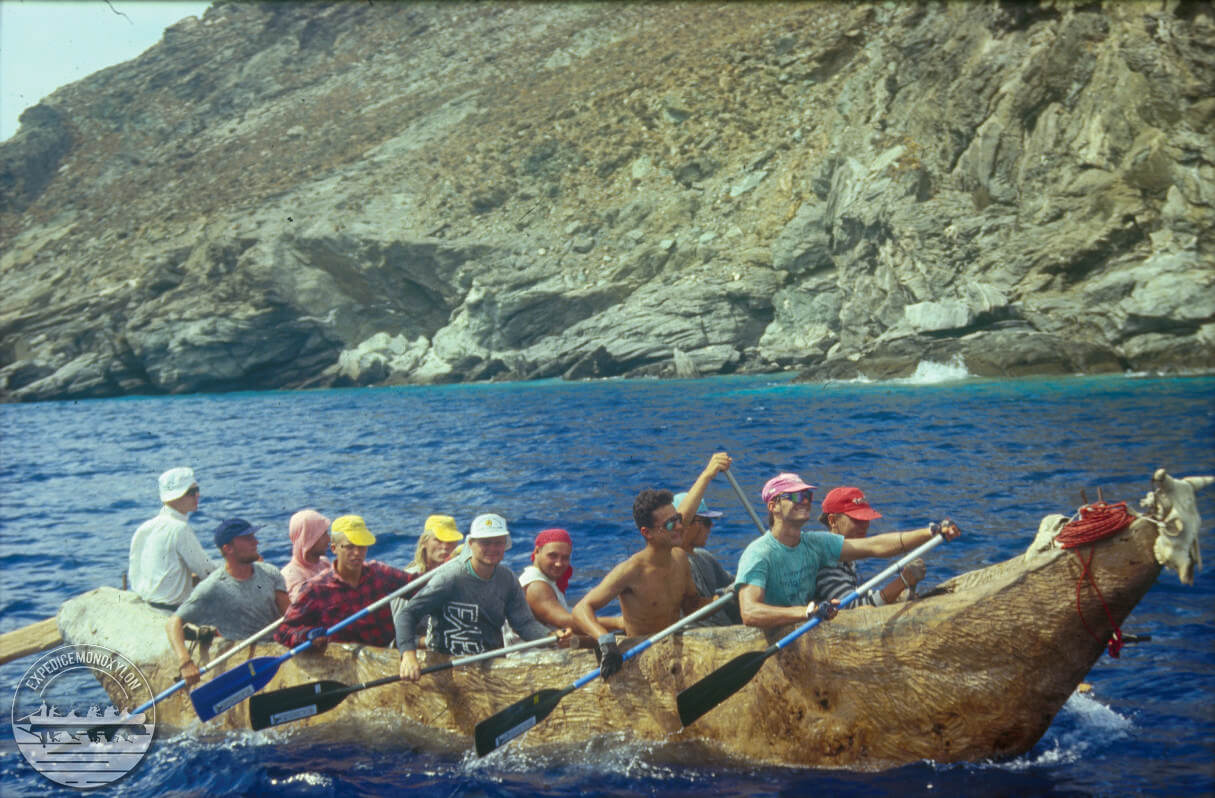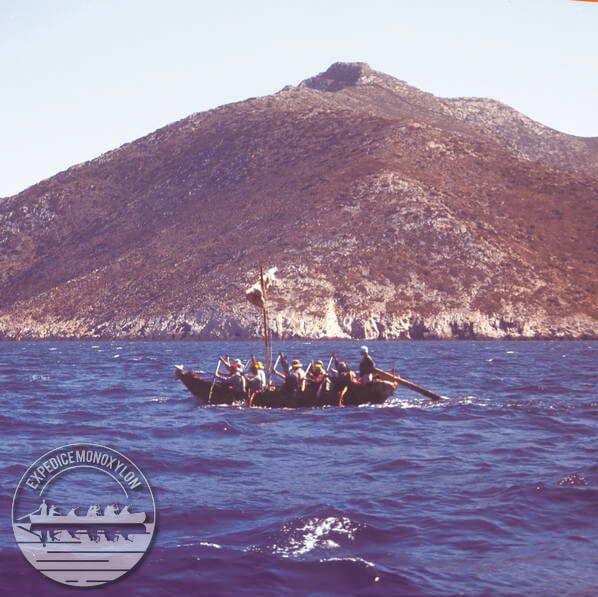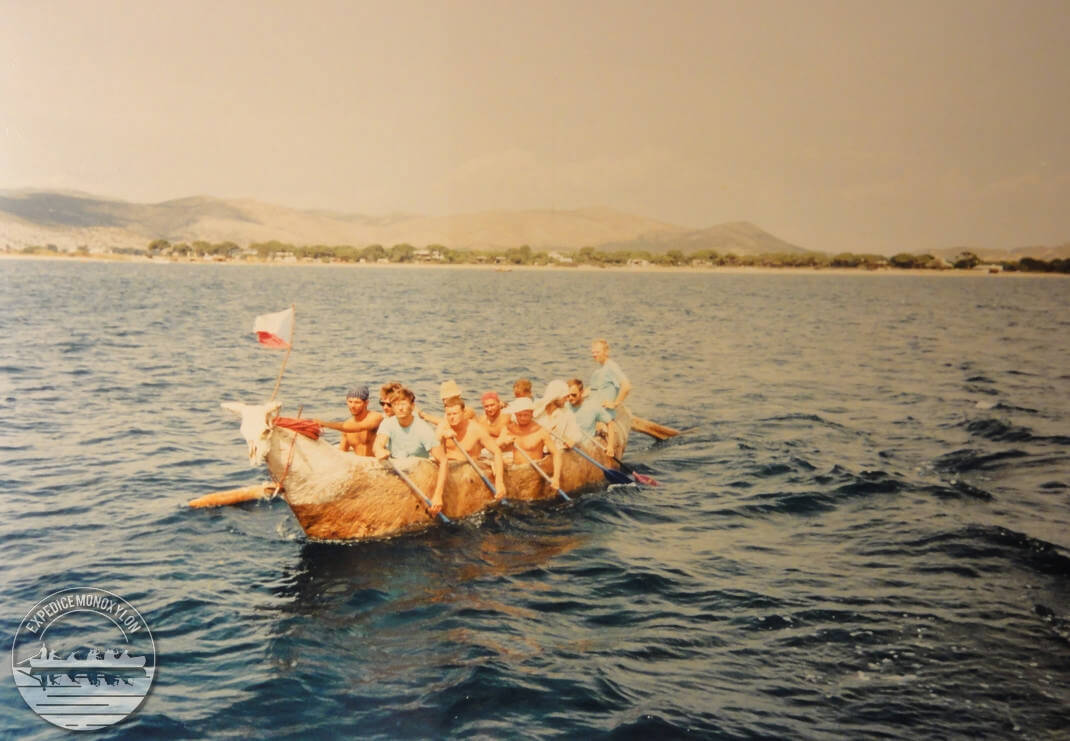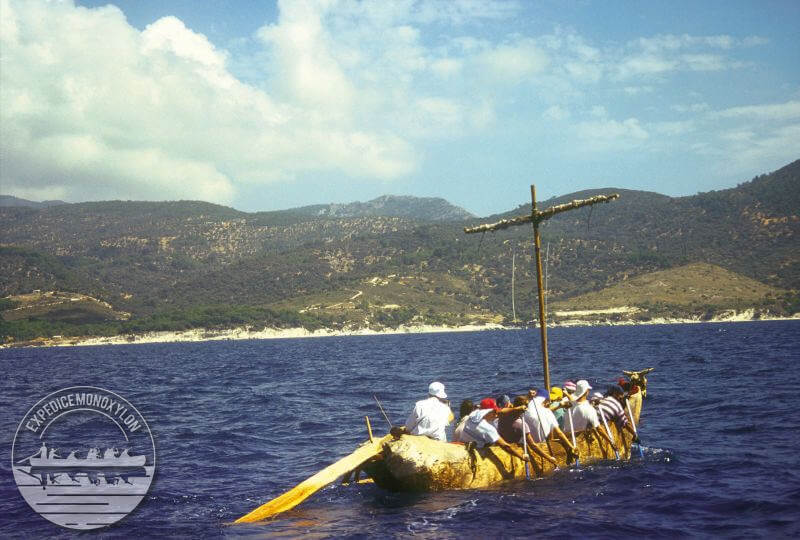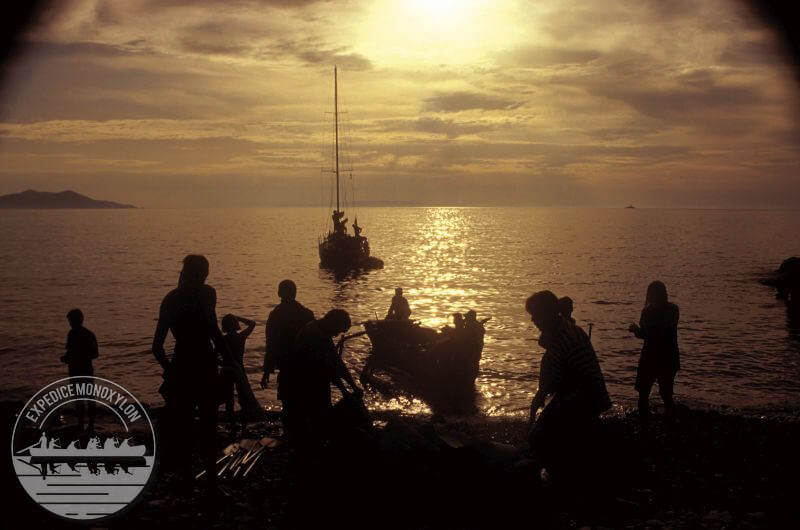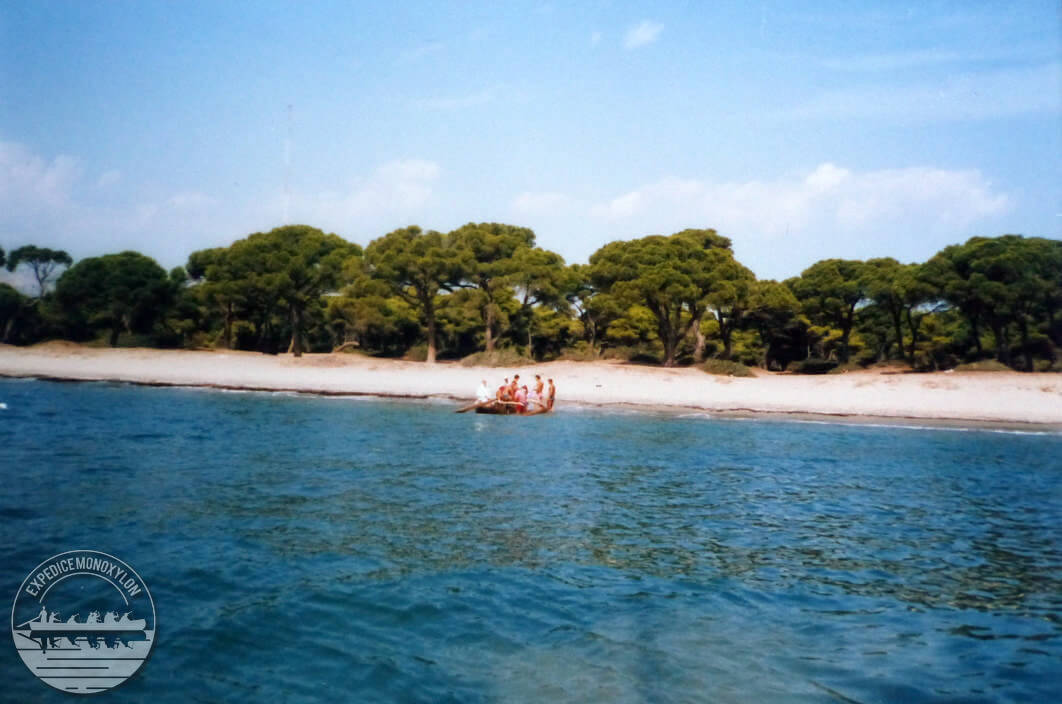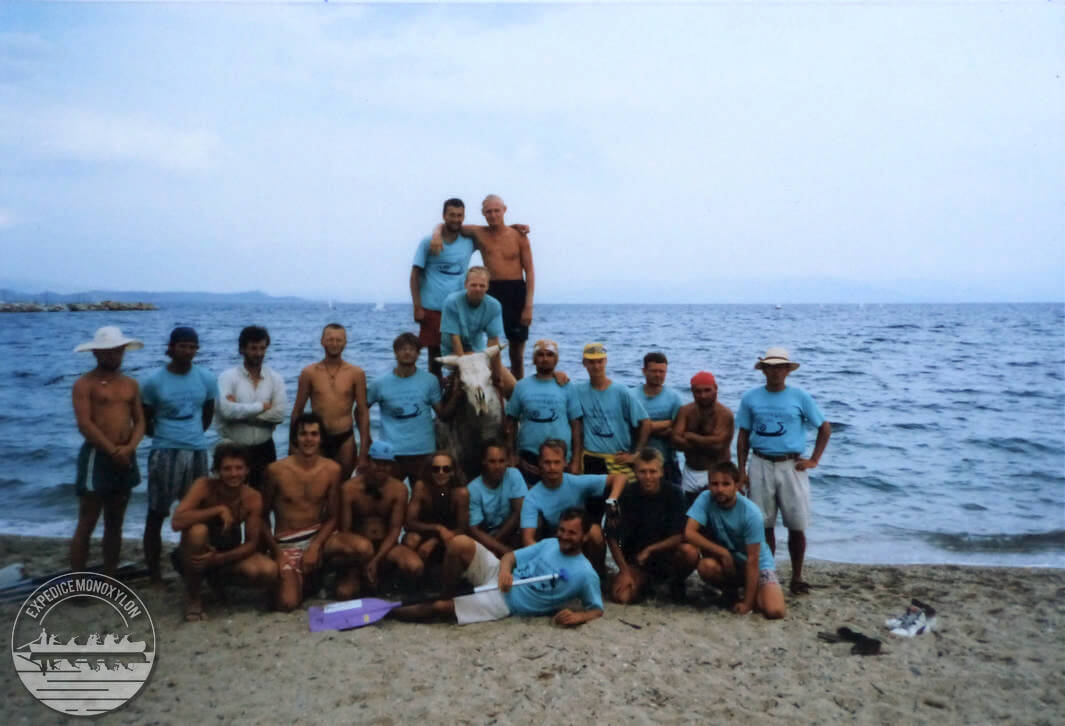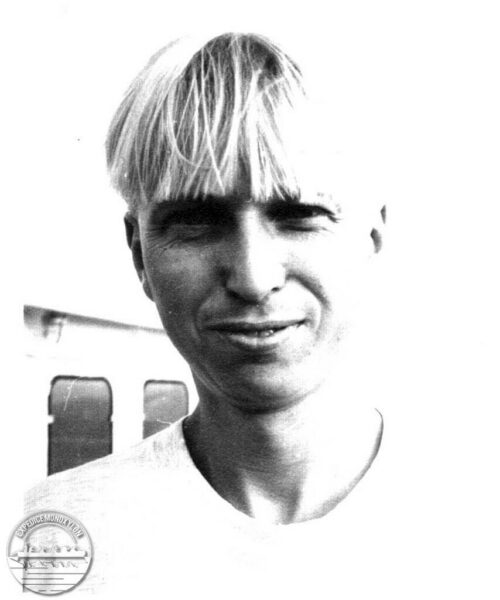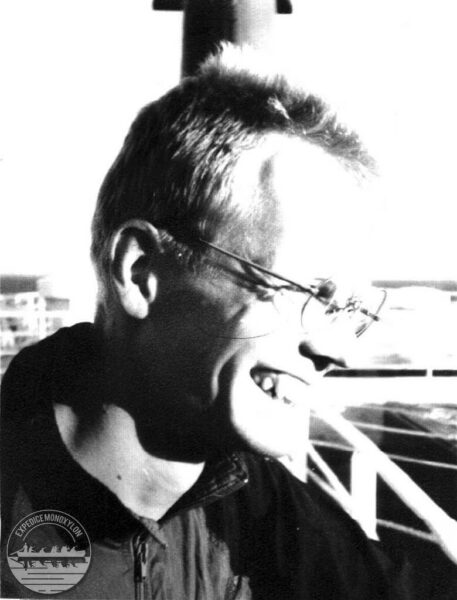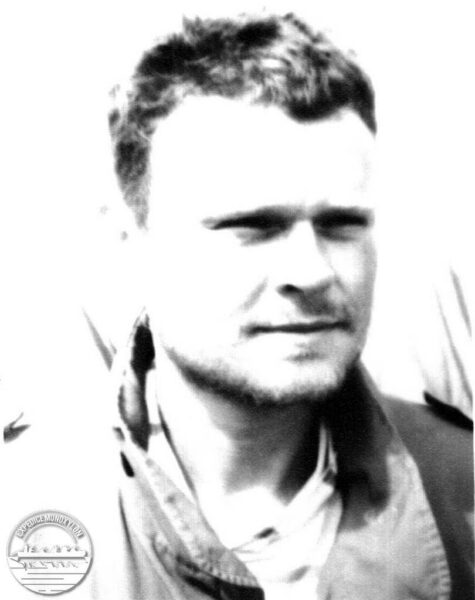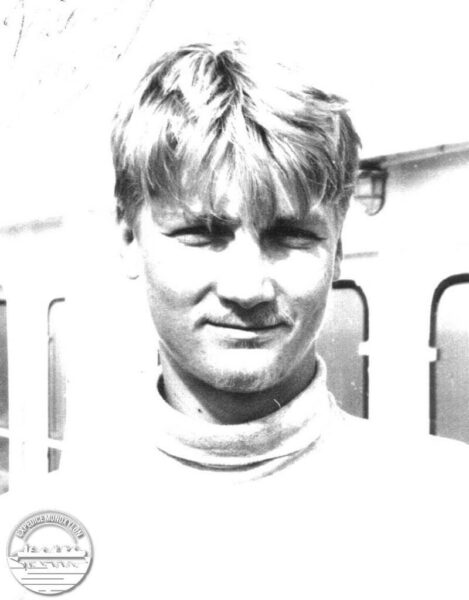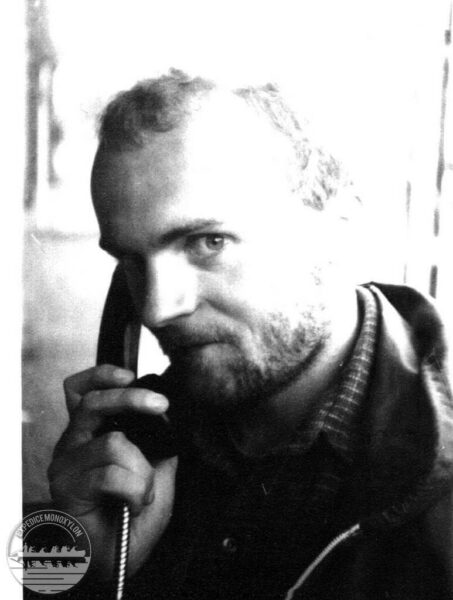The Monoxylon I expedition
Expedition Monoxylon I , which took place in September 1995 in the Aegean Sea, was our first major maritime expedition.
The 6-meter-long monoxyl was made specifically for this expedition as part of an archaeological experiment. Despite all the problems associated with the construction of the ship and the unfamiliarity of sea navigation, it was able to carry a crew of 11 people and provide space for carrying additional cargo.
We covered a distance of 290 km. We sailed along the coast of the Greek islands and on the high seas in between.
The result of the expedition was the confirmation of Radimir Tichý’s hypothesis that monoxyles may have played an important role in the migration of the first agricultural cultures (people, animals and crops) from the Near East to the area of mainland Greece in the Neolithic, i.e. the younger Stone Age of 7000 BC.
Route
The route was planned across the Aegean Sea from east to west. We set off from the Greek island of Samos, which is now close to the Turkish coast and was part of it in the Neolithic. We sailed along the islands of Ikaria, Mykonos, Tinos, Andros and Euboia to the coast of the Attica peninsula, where the expedition ended near the town of Nea Makri.
The route was chosen so that the crew of the Monoxyll could manage sea navigation without charts and instruments just by visual contact with the nearest land.
We paddled 231 km on our own. Due to stormy weather, the monoxyl was towed twice by the escort vessel on a 55 km long route.
BOAT
The boat produced for the Monoxylon I expedition was purely hypothetical, as there were no known finds of wooden boats in the Mediterranean in 1995. Only the discovery of the Monoxylon at Tybrind Vig (Denmark) was known to the expert community. This discovery of a plated boat on the former sea coast clearly demonstrated the use of this type of vessel in coastal shipping.
Our first monoxyl was made from the trunk of a poplar tree. The first technique to be used was the burning out. Subsequently the techniques of woodworking, using accurate ancient stone age tools such as fangs and axes, were applied.
Monoxyl made of light poplar wood was not very successful at sea voyages, especially because of the high centre of gravity of the whole ship. The thin bottom of the ship was not able to balance the mass above the waterline (massive raised bow, crew and cargo placed in the ship) even after water absorption. The problem with the transverse stability of the ship was solved by adding a side float, but this was compensated by a significant reduction in the cruising speed to an average of 3 km/h. The float also made it difficult for the coxswains to maintain the direction of travel, as the boat tended to roll spontaneously to the side of the float.
course of the expedition
The boat was originally fitted with a primitive mast with a fixed boom and a sail. During the first stages of the expedition, it became apparent that this type of mast and sail attachment was totally unsuitable for a boat and contributed significantly to the instability of the monoxylon. The cross sail is practically usable only in a tailwind, which, however, hardly blew during the expedition. Therefore, the entire mast was removed from the boat for the next stages of the expedition.
